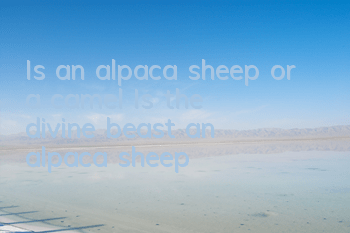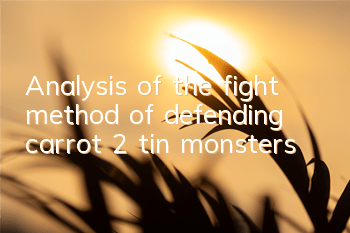Is the "divine beast" alpaca, is it a sheep or a camel?
First of all, let me tell you a knowledge point that you can use to show off: alpacas are a member of the Camelaceae family, not a sheep!
Everyone will definitely have questions: No, shouldn’t there be mountains on the back of a camel? Why don’t alpaca look like a camel at all?
This has to start with the ancestors of camels!
I got separated as I walked
The ancestors of the Camelaceae originally originated in North America about 50 million years ago. During the Quaternary Ice Age, due to the decline of sea levels, one of them crossed the Bering Strait, went from North America to Asia, and evolved into the Bactrian camel that we are common and the dromedary camel in Africa.
The other branch went south from North America and reached the Andes region of South America, which is the ancestor of the current South American llama - Medieval camels.
The Path to Camelaceae (Burger et al., 2019)
There are actually only four species of meridian camels in South America: Guanaco, Vicuna, Llama and the familiar alpaca. Among these four types of camels, the original camel and llama are wild species, while the llama and alpaca are domesticated species (please remember these four names, because they will appear repeatedly later, which is very easy to remember).
(Pictures from the Internet)
But at this time, there was actually no species of alpaca.
Because alpacas are domesticated species, it means that humans must participate.
After the last time humans came out of Africa, they gradually spread to Eurasia. After the last glacier period (about 20,000 years ago), humans further crossed the Bering Strait from Asia and also arrived in the Americas.
This begins the story of human domesticating alpacas.
Humans walk out of Africa (pictures from the Internet)
Then why did humans choose to domesticate alpacas instead of other species, such as pigs, cows, sheep.
First of all, it’s not that I don’t want to, it’s really not!
Look at the other two species domesticated by the hard-working South American people: turkey + guinea pig.
(Pictures from the Internet)
We all know that turkey is a must-have food for Thanksgiving, but an innocent and harmless animal like guinea pigs has the same main function in South America as turkey: become food!
In the past, people who lived in South America had guinea pigs, and they would roast guinea pigs to entertain guests during festivals (I don’t know how to eat them anyway).
High-energy warning ahead!
(Pictures from the Internet)
But over time, you have toChange the taste. Besides, in terms of adaptability to nature, humans are very dependent on nature. In addition to food being provided by animals, even clothes must be. For example, alpaca wool is a natural raw material for various textiles (you can tell how sufficient the wool is when the alpaca is pulled after pulling out the wool, and there are dozens of natural colors).
(Pictures from the Internet)
So, the South American people first set their sights on the wild camels running happily among the Andes.
Wild llama (Picture from the Internet)
Moreover, because of the South America where alpacas are located, there are very few natural enemies. So their personalities are also very docile and cute. For example, you never bite because you don’t have the front teeth!
(Pictures from the Internet)
The most intense defensive weapon that can be used is nothing more than "long-range cannon firing", which is relatively easy to tame.
(Pictures from the Internet)
At this point, humans domesticate animals, just like boys chasing girls, and no one with too sensitive personality will be successful. For example, on the African savanna, which has been in fierce survival competition for many years, even the zebras we think are very "meek" have developed a character of fighting when there is a slightest movement (no wonder, until now, there is no successful domestication animal on the African savanna...).
(Pictures from the Internet)
But these are not enough!
In addition to relying on animals for food and clothing, humans also have special costs. Let the horse run and eat less, and domesticate animals, first consider finding someone who only eats grass and not meat. Alpacas are particularly "competitive" and perfectly match this!
(Pictures from the Internet)
In the end, these various factors add up, and an alpaca with a little innate destiny is born (Hegel: existence is reasonable, and things that exist in reality have their own logic!).
Solve the mystery of alpaca's life experience
It seems so reasonable, but there is still a question: Which wild species did this alpaca domesticate? International scientists have never made it very clear. Some say it was made from Guanaco, some say it was Vicuna, and some say it was made from Guanaco and Llama.
However, this cannot be blamed on scientists. Because... these camels look so similar! (Anyway, remember that they are all cute)
(Pictures from the Internet)
It was not until recently that Zhan Xiangjiang's laboratory of the Institute of Zoology, Chinese Academy of Sciences, and domestic and foreign scientists jointly published a research paper in the International Frontier Journal of Genetics Genome Biology, and systematically unraveled alpacas from the genomic level.Mystery of your life experience: Your dad (ancestor) is Vicuna. but! ! There was another "Uncle Wang" next door in history, that is Llama.
After reading this, everyone not only asks, how do scientists know?
First, scientists have collected samples of these four camels in the Andes region of South America, namely two domesticated species (alpaca and llama Llama), and two wild species (native camel Guanaco and llama Vicuna).
Figure 1 Sampling Map
After getting the DNA sequence, the first thing I do is to use the system tree to construct it, depicting the evolutionary relationship between them, which we will first record as the A tree. However, this tree A grows a bit strange: the two wild species Guanaco and Vicuna have been separated for a long time. This is understandable, after all, they are two wild species.
Llama is a descendant of Guanaco, and this is not much controversial, and previous research also supports this conclusion.
But, but! Alpacas have a longer evolutionary relationship than Vicuna, and it looks like Vicuna is domesticated from alpacas. This does not make logical sense: how can wild species be descendants of domesticated species?
Figure 2 Phylogenetic Tree Construction
So, the scientists conducted another analysis of the genetic structure and calculated the proportion of ancestral components of each of their individuals, and then found the reason.
It turns out that about 36% of the DNA components of Alpaca infiltrates from Llama, which is likely to cause Alpaca and Llama to get closer to the A tree, making people feel that Vicuna is a illusion that was domesticated from Alpaca.
Figure 3 Genetic structure analysis
So, everyone will wonder, if all these infiltrated DNA fragments are removed, would it be normal?
Scientists actually think so...
Therefore, after the scientists further blocked these DNA fragments through the operation of "local ancestor inference", they found that it was indeed normal!
Figure 4 Phylogenetic tree construction (after removing infiltration fragments)
Not only that, scientists found through model calculations that llamas gave about 36% of their DNA, and Alpaca also gave about 5% of their DNA back. These large-scale "recitations" have created inconsistencies among previous researchers.
Figure 5 Schematic diagram of evolutionary relationship
So, I know "I amAfter the question of whom, scientists had a new question: When did this kind of "recitation" happen? And how did it happen? (Is anyone forced them?)
In order to find the answer to this question, scientists counted the length of these DNA fragments and calculated the most likely time when the "recitation" occurred by constructing a statistical model called "recombination-decay".
Figure 6 Inference of infiltration time
The results found that the two times were relatively close, both about 500 years ago! That is the 1630s. (Alpaca os: It's been 500 years, you've discovered it yet!)
(Pictures from the Internet)
What happened 500 years ago?
Opening the history textbook, it was found that the 1630s were a very critical period in the history of civilization development for South America, and it can even be said that it changed the trajectory of civilization development in South America!
Before the sixteenth century, the Inca Empire was the one who ruled South America. The Inca Empire shaped the once very glorious Inca civilization, and was known as the "three major civilizations in the Americas" together with the Mayan civilization and the Astek civilization.
But with Columbus discovering the American continent in 1492, the Europeans started a wave of colonial expansion. It was in the 1630s that the Spanish arrived in South America.
When the two armies meet, there will be a battle. This war can be said to be without suspense. We can imagine that the Indians who faced the Spaniards with guns and cavalry bonuses had almost no "cavalry" (review what species can be domesticated in South America we just mentioned...) had almost no power to resist. The Spanish easily conquered South America and started the South American colonial era. From this we can also see how important the domestication of animals is to the development of human social civilization!
(Pictures from the Internet)
After the Spanish occupied it, not only slaughtered the Indians, but also did not let the animals go. Through inferences on the historical size of the population dynamics, researchers have indeed confirmed that the alpaca population has accelerated its decline at that time.
At the same time, the Spanish are actually stupid and can't tell the difference between alpaca and llama. These two kinds of camels were mixed together. This chaotic management method has caused the large-scale gene infiltration ("recitation") phenomenon we have seen above.
(Pictures from the Internet)
Although the arrival of the Spanish conquerors had a significant impact on the local traditional alpaca management method, it is gratifying that since then, the alpaca species has also moved from South America to the world!
(Pictures from the Internet)









